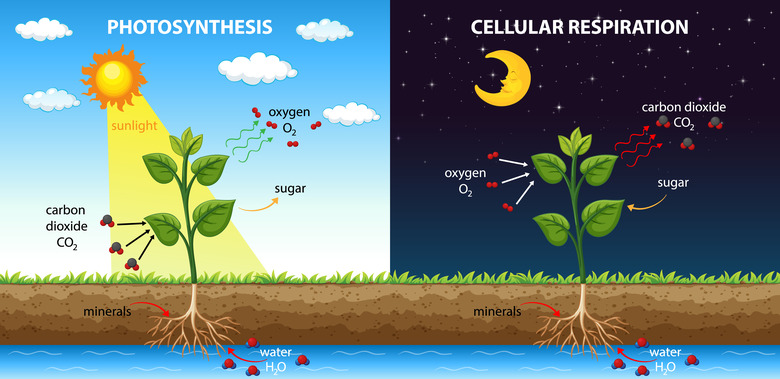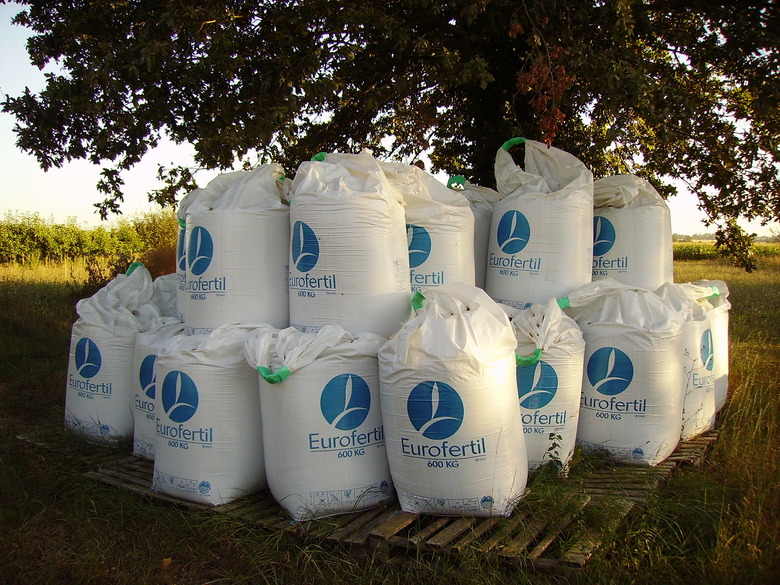How Do Plants Get Food And Water?
From 800 feet below the ocean's surface to almost 15,000 feet above sea level, different kinds of plants have the ability to make their own food. How plants make food follows the same basic principles, even though different species live in completely different environments, including water (aquatic plants), soil (terrestrial plants) and air (epiphytic plants, also called "air plants," because they live out of the soil).
The common thread that ties red algae, growing 800 feet underwater, to grass, which grows almost 15,000 feet above sea level on Mt. Everest, is **the ability to photosynthesize and make their own food.**
Plant Fertilizer vs. Plant Food
The answer to the question "How do plants get food?" is not "fertilizer." Although commercial fertilizer packaging is often labeled "plant food," this misnomer is a marketing ploy without basis in science.
Loosely explained, plant fertilizer can be compared to vitamin or mineral supplements for human consumption that may enhance health but cannot sustain life as food does. Plant fertilizer can help facilitate the process of photosynthesis and enhance plant health, but fertilizer alone cannot sustain plant growth without a plant's ability to photosynthesize and manufacture its own food.
What Do Plants Need to Make Food?
Plants need sunlight, water and carbon dioxide to make their own food. These three components are derived from different sources, combining in a scientific process called photosynthesis.
In the aforementioned example of red algae's ability to photosynthesize even when submerged to a depth of 800 feet, the darkness at that depth would seem to make photosynthesis impossible. But the red pigment that gives this algae its name allows it to absorb the almost-imperceptible blue light that reaches that far beneath the ocean's surface, providing it the ability to photosynthesize.
There are exceptions to every rule, however, and some plants also have the ability to capture their own food instead of making their own food. For example, even though the carnivorous plant sundew (Drosera filiformis, USDA zones 6 to 9) is able to photosynthesize, its primary sources of food are the insects that it traps and digests.
How Do Plants Make Food?
For most plants, it's the chlorophyll in their leaves that captures energy from the sun. When this energy combines with water absorbed by plant roots and carbon dioxide in the atmosphere, a series of chemical changes occurs, resulting in the manufacture of sugar (glucose).
Some exceptions to this are plants that don't contain chlorophyll, such as Indian pipe (Monotropa uniflora, zones 6 to 8), which is a saprophyte. Saprophytes maintain symbiotic relationships with other plants through which they obtain nutrients.
Tip
Saprophytes don't contain chlorophyll and maintain symbiotic relationships with other plants through which they obtain nutrients.
How Do Deciduous Plants Make Food in Winter?
Although evergreen plants continue to photosynthesize during winter because they retain their foliage, deciduous plants and herbaceous perennials lose their leaves in fall. So why don't these plants die in winter since they cannot make their own food?
It's because they enter a state of dormancy when their leaves drop and photosynthesis shuts down. They store food in their root systems to nourish them as they're "waking up" in springtime before leaves appear and photosynthesis resumes. However, they continue to uptake water during winter, which is why it's important to keep deciduous plants and herbaceous perennials watered during winter drought periods.
Tip
It's important to keep deciduous plants and herbaceous perennials watered during winter drought periods, because they store food in their root systems to nourish them as they're "waking up" in springtime before leaves appear and photosynthesis resumes.
How Do Plants Get Water?
Plants are hydraulic marvels. From a newly emerging seedling to Hyperion, the world's tallest tree at 380 feet, plants primarily absorb water from the soil through their root systems and move it upward by means of hydraulic transport through an internal pipeline of sorts called the xylem.
Although plants may also absorb some water through their leaves, they take in the vast majority of water through their roots. This is only one reason that watering plants by spraying their foliage is not recommended; instead, watering at the base of plants to direct water toward the root system is more efficient. Another reason for not spraying water on a plant's leaves is because this practice can promote fungal diseases.
References
- Smithsonian: With Every Breath You Take, Thank the Ocean
- Montana State University: Everest Education Expedition
- North Carolina State Extension: Drosera Filiformis
- Washington University: Plant Data Sheet – Indian Pipe
- University of Notre Dame: What Makes and Breaks the World's Tallest Trees
- Berkeley: Introduction to the Rhodophyta
- University of Alaska Fairbanks: How do Plants Make Food?

